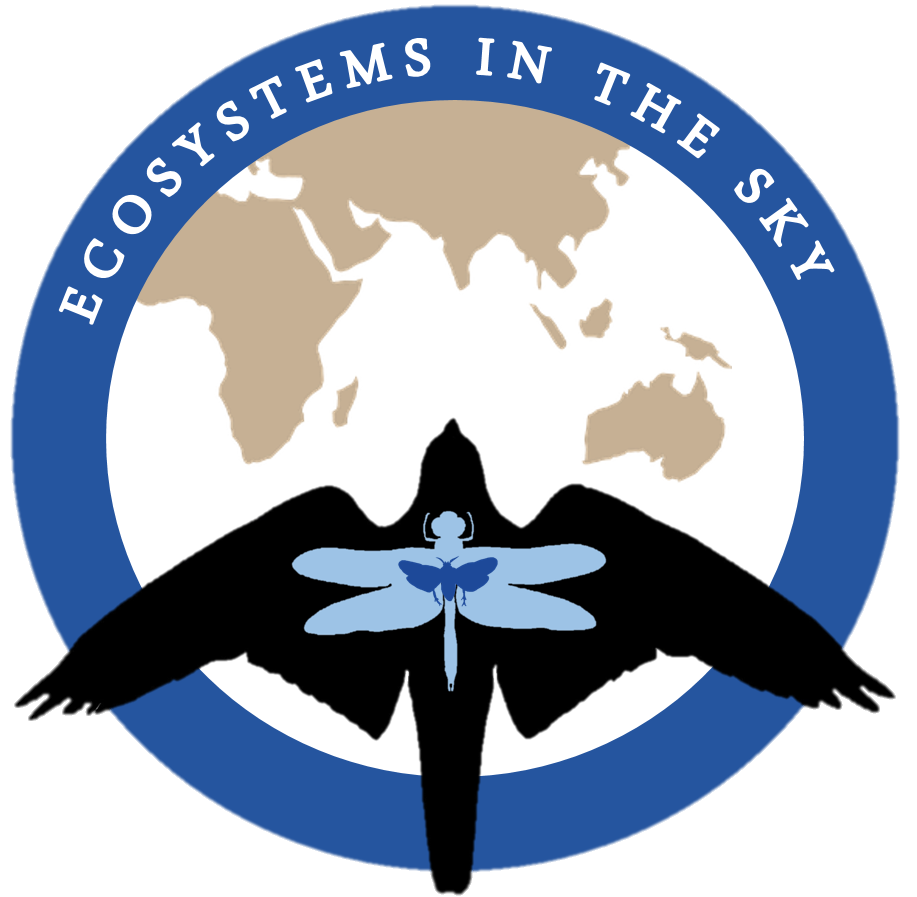European Dragonfly Migratory Isoscape
Red-veined darter (Sympetrum fonscolombii) Photo: Johanna Hedlund
Due to the Covid-19 outbreak, all fieldwork planned under the Ecosystems In The Sky Project that is taking place abroad (in India, China etc) has been cancelled for the unforeseeable future.
However, there are plenty of unanswered question concerning dragonfly migration in Europe, and in the UK.
Of the 143 species of dragonflies and damselflies recorded in Europe, approximately 21 of the true dragonflies (“Anisopterans”) are regarded as migratory. This conclusion is based on empirical observations of large swarms of dragonflies engaged in directional flight, movements that have been witnessed on land as well as coming in from the sea. In addition, re-occurring appearances of vagrant individuals, with a core distribution much further afield, is also taken as evidence of these species nomadic, vagrant behaviour.
Species with the most well-known migratory tendencies, and that reproduce commonly in Europe, include (Scientific name, English name, Swedish name):
Aeshna affinis, Southern migrant hawker, Klarblå mosaikslända
Aeshna cyanea, Blue hakwer, Blågrön mosaikslända
Aeshna isoceles, Green-eyed hawker, Kilfläckslända
Aeshna juncea, Moorland hawker, Starrmosaikslända
Aeshna mixta, Migrant hawker, Höstmosaikslända
Anax imperator, Blue emperor, Blå kejsartrollslända
Anax parthenope, Lesser emperor, Mindre kejsartrollslända
Hemianax ephippiger, Vagrant emperor, Brun kejsartrollslända
Crocothemis erythraea, Broad scarlet, Karmintrollslända
Libellula quadrimaculata, Four-spotted chaser, Fyrfläckad trollslända
Selysiothemis nigra, Black pennant
Sympetrum danae, Black darter, Svart ängstrollslända
Sympetrum depressiusculum, Spotted darter, Svartfläckad ängstrollslända
Sympetrum flaveolum, Yellow-winged darter, Gulfläckad ängstrollslända
Sympetrum fonscolombii, Red-veined darter, Vandrande ängstrollslända
Sympetrum meridionale, Southern darter, Ljusröd ängstrollslända
Sympetrum pedemontanum, Banded darter, Bandad ängstrollslända
Sympetrum sanguineum, Ruddy darter, Blodröd ängstrollslända
Sympetrum striolatum, Common darter, Större ängstrollslända
Sympetrum vulgatum, Migrant darter, Tegelröd ängstrollslända
Lindenia tetraphylla, Lobe-Tailed dragonfly / Arabian Lobetail
Where these species come from, where they go, how frequent the migration is, which part of the population that migrate, why migration is not always witness annually, why migration appears to be more predictable at some places…. all of these questions are largely unanswered.
Trusty field assistant Alex looking out for target species at the field site, July, 2020
Four-spotted chaser (Libellula quadrimaculata) female
I am using stable isotope analysis to breach these gaps in our understanding of dragonfly migration.
What is a stable isotope?
Atoms of chemical elements can differ in their number of neutrons, giving rise to alternate forms of the element, called isotopes. Isotopes vary naturally in the environment. For example, depending on a region’s rainfall pattern, isotopes of the element hydrogen (H) are present in a certain characteristic composition (see map below).
Map of Europe showing the pattern of stable hydrogen isotope δ2, an Isoscape
How can stable isotopes be used to study migration in dragonflies?
This composition of stable hydrogen isotopes is absorbed by living organisms through the food chain, thereby reflecting their geographical origin. Dragonfly larvae are aquatic, and the stable hydrogen isotopes that are stored in the wings of adult dragonflies have their origin in the freshwater where the adults developed. Thus, by sampling tiny pieces of adult dragonfly wings, the location where the individual was encountered can be compared to where it developed, and a migratory pattern can be inferred.
FIELDWORK
Museum collections are an excellent source for samples of dragonflies, as many individuals from many different origins are available at one place. And you do not need to catch them. I have already been fortunate enough to visit the Natural History Museum of London (blog entry here) and The National History Museum of Guthenburg (blog entry here), and retrieved several samples. However, fresh samples are also needed, partly because not all species from all areas of interest could be located in the museums, and partly because wild caught samples are a useful comparison.
Fortunately, the samples needed are absolutely tiny, only about 2x2mm of the wing is required. Dragonflies are very robust fliers, and you often find them missing big areas on several parts of their wings, and they are still very capable of hunting, mating and escaping from predators. Thus, wild caught dragonflies can be sampled and then released without harming them.
Recently, a sunny and wind free day presented itself in Cornwall and I went out with my partner and field assistant Alex, to catch some of the species of interest to the project “European Dragonfly Migratory Isoscape”.
A red veined darter (Sympetrum fonscolombii)
A common darter male (Sympetrum striolatum)
A blue emperor (Anax imperator)
Up to five individuals of the migratory red-veined darter had been seen at the first field site, but when we arrived, we couldn’t find any of them. We did however managed to catch several of the viciously territorial blue emperors, a four-spotted chaser and several common darters. The first species we encountered at the second field site did however turn out to be a red-veined darter!
Even though common darters, fours-potted chasers and blue emperors are migratory in some parts of their range, it is not very likely that the ones encountered at our field site in Cornwall are. However, it is very important to produce a base line for the isoscape that is to be built. In order to be sure of what to expect in terms of the isotopic pattern of a resident dragonfly, resident individual from a number of species need to be sampled as well. For this purpose, common species as the blue emperor, four-spotted chaser and common darter are good candidates.
A four-spotted chaser (Libellula quadrimaculata)
Two blue emperors (Anax impertor), with wings baring the marks of their relentless territorial fights
References
Boudont and Kalkman (2015) Atlas of the European dragonflies and damselflies. KNNV Publishing, the Netherlands
Dumont and Hinnekint (1973) Mass migration in dragonflies, especially in Libellula quadrimaculta: a review, a new ecological approach and a new hypothesis. Odonatologica 2(1): 1-20. Link









